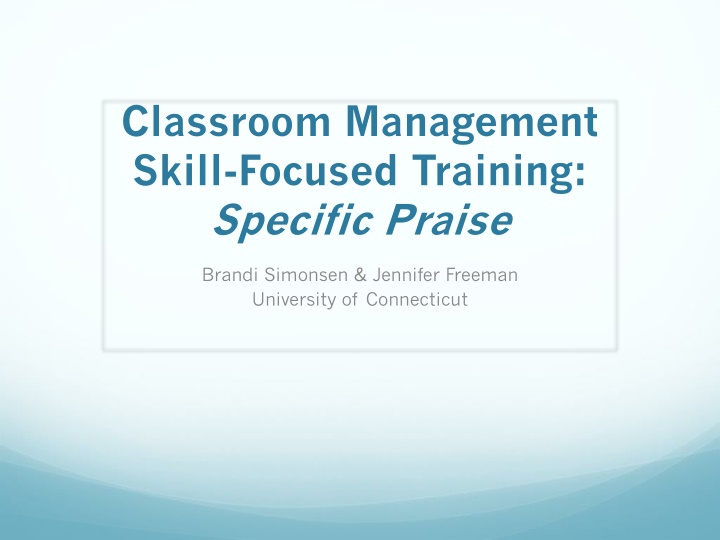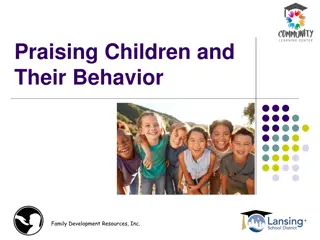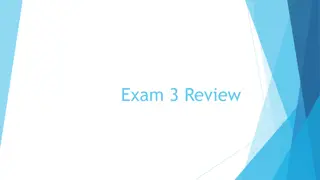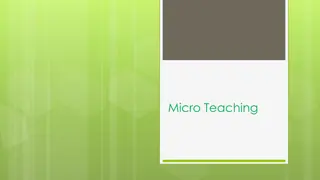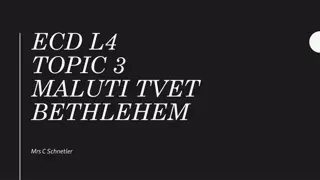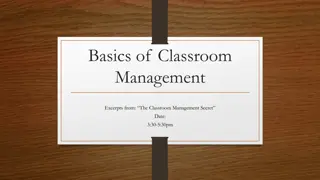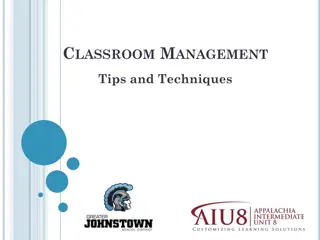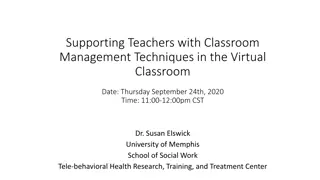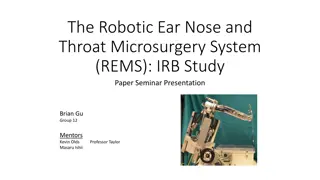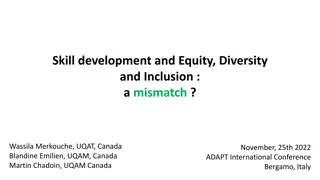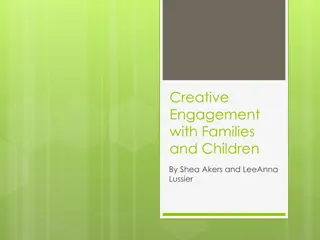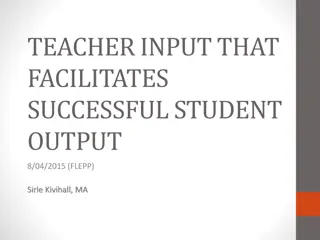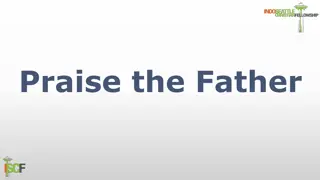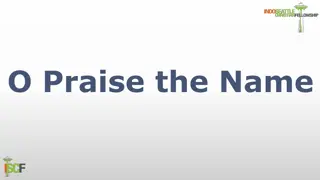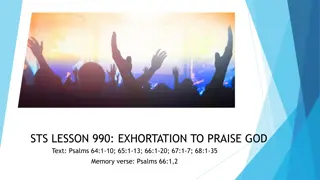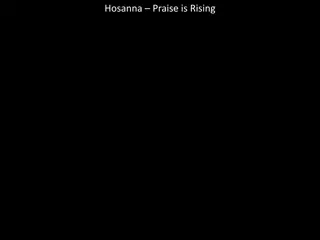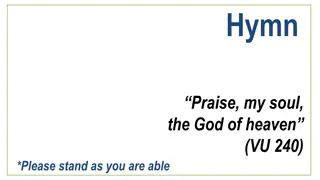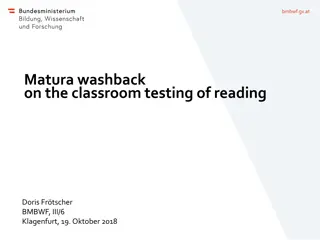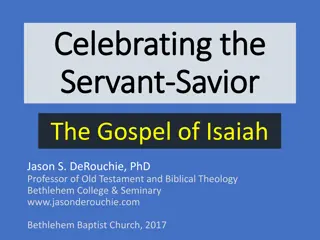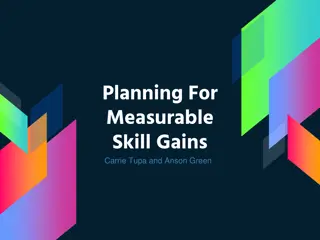Skill-Focused Training in Classroom Management: Specific Praise Approach
Skill-Focused Training session by Brandi Simonsen and Jennifer Freeman from the University of Connecticut emphasizes the importance of Specific Praise in classroom management. The session covers the definition, rationale, examples, and critical features of specific, contingent praise as an effective behavior reinforcement strategy. It outlines strategies for identifying and implementing specific praise, emphasizing self-management techniques, and assessment through acceptability and usability questionnaires.
Download Presentation

Please find below an Image/Link to download the presentation.
The content on the website is provided AS IS for your information and personal use only. It may not be sold, licensed, or shared on other websites without obtaining consent from the author.If you encounter any issues during the download, it is possible that the publisher has removed the file from their server.
You are allowed to download the files provided on this website for personal or commercial use, subject to the condition that they are used lawfully. All files are the property of their respective owners.
The content on the website is provided AS IS for your information and personal use only. It may not be sold, licensed, or shared on other websites without obtaining consent from the author.
E N D
Presentation Transcript
Classroom Management Skill-Focused Training: Specific Praise Brandi Simonsen & Jennifer Freeman University of Connecticut
Agenda Introductions Presentation Definition Rationale Examples Critical features Activity Identifying examples of skill in your context Develop self-management strategies Definition of self-management Description of self-management for this skill Review/discussion of materials needed to implement Practice using strategies Review and wrap-up Complete Acceptability and Usability Questionnaires
Quick Overview: Five Critical Features of Evidence-based Practices in Classroom Management: 1. Maximize structure in your classroom. 2. Post, teach, review, prompt, monitor, and reinforce a small number of positively stated expectations. Prompt 3. Actively engage students in observable ways. OTRs Specific Praise 4. Establish a continuum of strategies to acknowledge appropriate behavior. 5. Establish a continuum of strategies to respond to inappropriate behavior. (Simonsen, Fairbanks, Briesch, Myers, & Sugai, 2008)
Presentation: Specific Praise Definition Rationale Examples Critical features
Definitions What is specific and contingent praise? Specific, contingent praise is a positive statement, typically provided by the teacher, when a desired behavior occurs (contingent) to inform students specifically what they did well. (Simonsen, Fairbanks, Briesch, Myers, & Sugai, 2008)
Rationale Why provide contingent praise? Delivering contingent praise for academic behavior increased participants (a) correct responses (Sutherland & Wehby, 2001), (b) work productivity and accuracy (Craft, Alber, & Heward, 1998; Wolford, Heward, & Alber, 2001), (c) language and math performance on class work (Roca & Gross, 1996), and (d) academic performance (Good, Eller, Spangler, & Stone, 1981). appropriate social behavior increased participants (a) on-task behavior (Ferguson, & Houghton, 1992), (b) student attention (Broden, Bruce, Mitchell, Carter, & Hall, 1970), (c) compliance (Wilcox, Newman, & Pitchford, 1988), (d) positive self-referent statements (Phillips, 1984), and (e) cooperative play (Serbin, Tonick, & Sternglanz, 1977). (Simonsen, Fairbanks, Briesch, Myers, & Sugai, 2008)
Rationale Why provide specific praise? Increasing the number of behavior specific praise statements was associated with an increase in on- task behavior (Sutherland, Wehby, & Copeland, 2000). Providing contingent praise in conjunction with either establishing classroom rules in isolation (Becker, Madsen, & Arnold, 1967) or classroom rules paired with ignoring inappropriate behavior (Yawkey, 1971) was associated with increased appropriate classroom behavior. (Simonsen, Fairbanks, Briesch, Myers, & Sugai, 2008) Bottom line, research indicates is a good idea!
Examples & Non-examples Is this specific praise? Quick activity to check our understanding of specific praise. If the scenario on the ppt is an example of specific praise, give us a thumbs up. If the scenario is NOT an example of specific praise, give us a thumbs down.
Examples & Non-examples Is this specific praise? During educator-directed instruction, a student raises her hand. The educator says, Thank you for raising your hand. It s a positive verbal statement that occurs immediately after and specifically names the expected behavior.
Examples & Non-examples Is this specific praise? During educator-directed instruction, students are talking over the educator. The educator rolls his eyes and says, Gee, thanks for listening. Why? This is sarcasm, not specific praise.
Examples & Non-examples Is this specific praise? A student enters the class during educator-directed instruction; the student quietly walks to his seat. The educator walks over to the student and whispers, Thank you for coming in the room quietly. It s a positive verbal statement that occurs immediately after and specifically names the expected behavior.
Examples & Non-examples Is this specific praise? A student enters the class during educator-directed instruction; the student quietly walks to his seat. The educator gives the student a thumbs up to recognize the quiet entry. Why? This is general and non-verbal.
Examples & Non-examples Is this specific praise? During educator-directed instruction, one student is poking and attempting to talk with another student, who responds by showing the class quiet symbol. The educator immediately looks at the second student, gives a thumbs up sign, and mouths (moves lips without sound), Thank you for paying attention. It s a positive verbal statement that occurs immediately after and specifically names the expected behavior.
Examples & Non-examples Is this specific praise? During educator-directed instruction, one student is poking and attempting to talk with another student, who responds by showing the class quiet symbol. About 1 min later, the educator looks at a second student, smiles, and says good job. Why? This is general, and not clearly contingent.
Examples & Non-examples Is this specific praise? After a educator points to the consonant blend /th/, which is underlined in the word through, and says, What sound? a student responds by correctly pronouncing /th/. The educator says, Nice pronunciation. It s a positive verbal statement that occurs immediately after and specifically names the expected behavior.
Examples & Non-examples Is this specific praise? During a direct instruction lesson, the educator points to the consonant blend /th/, which is underlined in the word though, and says, What sound? Why? This is an opportunity to respond.
Examples & Non-examples Is this specific praise? After the student responds correctly by explaining the concept of conservation of energy the teacher says Nice job including all the major points in your answer. It s a positive verbal statement that occurs immediately after and specifically names the expected behavior.
Examples & Non-examples Is this specific praise? During a physics lesson the educator asks groups of students to work together to explain the concept conservation of energy. Why? This is also an opportunity to respond.
Critical Features So, what is specific praise? Verbal statement (i.e., not look or gesture) Deliver immediately after the behavior Specifically state the desired behavior demonstrated If you use other rewards, remember to pair specific praise with other rewards (e.g., delivery of tokens or points).
Activity: Specific Praise How will you use specific praise in your classroom? In your handout, write three (or more) specific praise statements that you will use during educator- directed instruction to recognize appropriate social behavior.
Developing Self-Management How will you increase the likelihood that you will deliver specific praise for appropriate social behavior? Definition of self-management Description of self-management for this skill Review/discussion of materials needed to implement Practice using strategies
Definitions What is self-management? According to Skinner (1953), we manage our own behavior in the same manner as we manage anyone else s through the manipulation of variables of which behavior is a function (p. 228). Self-management is engaging in one response (the self-management behavior) that affects the probability of a subsequent behavior (the target or desired behavior). For example, keeping a to do list (self- management behavior) may increase the likelihood that you do the things on your list (target behaviors).
Description for this approach How will I use self-management in this study? Arrange your environment. Set an initial goal for your skill rate (criterion for self- reinforcement). Goal can be adjusted weekly based on the previous weeks average. Select a strategy to prompt or remind yourself to use the skill. Self-monitor. Press button to advance counter each time you use the skill during the selected 15-min segment of educator- directed instruction. Self-evaluate. Record total skill statements in Excel. View the updated graph to determine if you met your performance goal. Self-reinforce. Select a privilegeyou ll allow yourself each day you meet your goal.
Description for this approach What will you do to support me? To help, we will send you weekly reminders. We will ask you to email your updated graph in the Excel file. In that email, we ll also ask you to let us know if you adjusted your goal based on your previous week s performance. We will use the following table to further develop your self-management plan.
Develop Self-management Plan How will I self-manage? Complete the self-management plan in your handout. We ll collect and copy these today, and we ll return them to you in person or in a sealed envelope in your mailbox in the next few days. (Remember your goal so you can start self-monitoring and self-evaluating today.)
Review, Discuss, & Practice with Materials to Implement How will I self-monitor and self-evaluate? Practice using the counter and preview picture of the excel spreadsheet.
